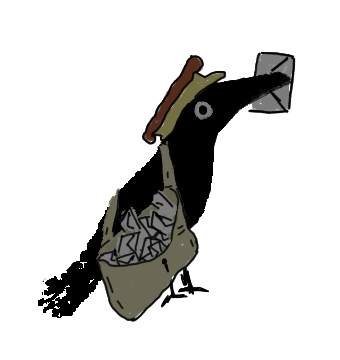
How to study math?
When I was a high school student, I struggled a lot with math. At first, I thought that it should be studied by memorizing lessons. I sometimes got an F and didn't pass the exam, and the whole day I would think that the school manager would want to call my parents and embarrass me about that. Math was a nightmare for me in those days, but over time I got better at math and even got an A+ in it. Here is my experience on how to study math and actually become better at it.
Math was created by ancient civilizations to solve the problems of their time and to build glorious structures like pyramids. A good example of problem solving at that time is how they used square equations to calculate different types of grounds space without actually measuring each time and to sell it.

By studying math, you actually gain the ability to solve different problems — but like learning how to drive a car, it needs constant practice and effort.
If you're comfortable with textbooks, try reading a demo version of the book and find one that builds a strong connection with you and you enjoy studying it.
If you're more comfortable with math videos, watch a few minutes of each video and pick the one that you can relate to and find engaging and cool.
You must decide how many problems you can solve each day. It can be as little as one problem per day or more. We call this a "problem box."
It's important to choose a number that allows you to have enough problem boxes for at least three weeks.
In first problem boxes you will struggle to solve problems and you probably answer most of them wrong. But by time math problems on that topic would be easier for you to solve and guess the solution at blink of an eye.
These cheat sheets will be your guideline in your first math problems when they are fresh. They will also serve an important role in reviewing data during emergency situations, like before an exam, etc...
For reviewing that topic you can use your math cheat sheets and your problems that you solve them wrong. In future articles we will discuss about how and when review your lessons.
Without car diagnostics, the car would keep running until the engine blows up because of bad fuel.

If you do a lot of diagnostics before the engine blows up, you will soon find what is causing problems and where the problem is. It's like a magic mirror that shows our blind spots.
After finishing a math topic, perform a test and judge yourself honestly. If you score below a certain percentage, like 50%, it means that you didn't do well in that topic and must restudy it.
Also hope that you would be the next master in math and enjoy learning that in near future.
Math was created by ancient civilizations to solve the problems of their time and to build glorious structures like pyramids. A good example of problem solving at that time is how they used square equations to calculate different types of grounds space without actually measuring each time and to sell it.

By studying math, you actually gain the ability to solve different problems — but like learning how to drive a car, it needs constant practice and effort.
1-Find a learning resource that suit you
Sometimes it actually not your fault that you don't understand math a bad learning resource can make you hate something. But a good news is the world is full of math books or math videos and you can use them.If you're comfortable with textbooks, try reading a demo version of the book and find one that builds a strong connection with you and you enjoy studying it.
If you're more comfortable with math videos, watch a few minutes of each video and pick the one that you can relate to and find engaging and cool.
2-Split your math problems into days
After you choose your learning resource, it's time to decide how you want to challenge yourself and test your knowledge.You must decide how many problems you can solve each day. It can be as little as one problem per day or more. We call this a "problem box."
It's important to choose a number that allows you to have enough problem boxes for at least three weeks.
In first problem boxes you will struggle to solve problems and you probably answer most of them wrong. But by time math problems on that topic would be easier for you to solve and guess the solution at blink of an eye.
3-Have a math routine
A good strategy for being better at math is determining a math routine and being consistent with it.What things do I need for a math routine?
The math routine consists of problem boxes that you created and problems that you got wrong. Also it can sometimes contain the time that you learn a new topic from your chosen learning resource.When do a math routine?
When you prepare everything thing that is needed for a math routine. It's time for deciding when should you study math and have that math routine. We recommend to do that at first time of day cause your brain has most energy to fight with math questions.4-Create a cheat sheet
During your studies, write formulas or geometric representations of important functions and important tips on a piece of paper. If a problem solution has a hidden tip, this is where you can write it down.These cheat sheets will be your guideline in your first math problems when they are fresh. They will also serve an important role in reviewing data during emergency situations, like before an exam, etc...
5-Do reviews
When you study anything you may forget what they are about or think that you are still master of that topic but in action you forgot formulas and can't solve a single problem from that topic.For reviewing that topic you can use your math cheat sheets and your problems that you solve them wrong. In future articles we will discuss about how and when review your lessons.
6-Do a lot of tests
Tests and exams are like car diagnostics. They help you to identify where you made mistakes in your studies or what things you thought you knew but, in reality, you didn't understand.Without car diagnostics, the car would keep running until the engine blows up because of bad fuel.

If you do a lot of diagnostics before the engine blows up, you will soon find what is causing problems and where the problem is. It's like a magic mirror that shows our blind spots.
After finishing a math topic, perform a test and judge yourself honestly. If you score below a certain percentage, like 50%, it means that you didn't do well in that topic and must restudy it.
7-solve at least one problem from topic that you have most issues with it
Sometimes, no matter how much we try, certain topics become our biggest enemy. But the good news is that by solving at least one problem from that topic, you can improve and make it one of your strengths. However, this improvement takes time, and you can't become a master of a topic you have the most problems with in a short period. This time depends on how much effort you put into addressing your weak spot. The more time you dedicate, the quicker the transfer will happen, but at least three weeks are needed to see improvementconclusion
Math is the ability to solve different problems. It is fascinating that how mathematics solve ancient problems and today ours. Without math there would no technology that make life easier for our ancestors and today's human. I discussed the tips that helped me become better at math.Also hope that you would be the next master in math and enjoy learning that in near future.

Ayda
Published on
May 19, 2025
Did you know?
crows hold funerals for their dead


